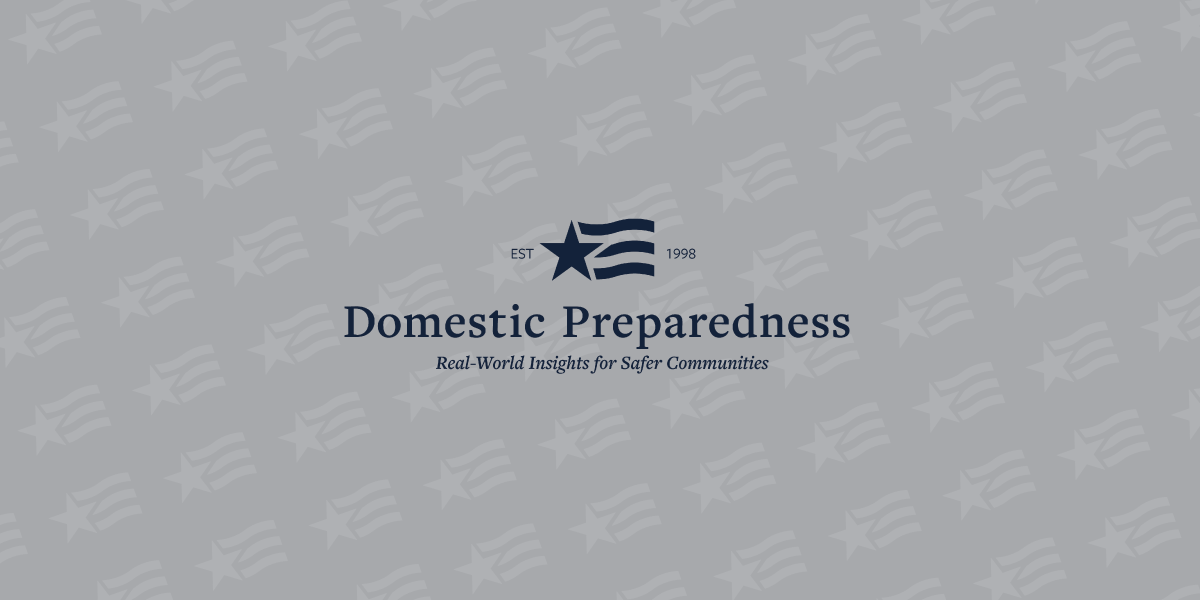- Articles, CBRNE, Critical Infrastructure, Emergency Management, Emergency Medical Services, Fire, Hazmat, Hospitals, Public Health, Science & Technology, Terrorism
- Joseph Cahill
In 1945, Nagasaki became the second Japanese city destroyed by an atomic bomb in the closing days of World War II. The nuclear explosion caused immediate damage and killed tens of thousands of people, but the radiological contamination that remained took many additional lives. A crisis at a nuclear power station such as the one that devastated the Fukushima area in the northeast corner of Japan’s main island in 2011 posed many of the same challenges as a deliberate radiological attack.
Even after the energy caused by radiation is completely gone, a person can still become contaminated. The damaging effects continue as long as radioactive material is on or near the person. To address this concern, considerable work has been carried out to prepare emergency medical services (EMS) for operations that might endanger EMS staff and other responders. However, less thought has been given for protection of the other major “component” of an EMS system – more specifically, ambulances and other vehicles.
Airflow Factors, Design Concepts & a Cloud of Dust
The radiological threat is unique. The contaminated area may be so large and/or the contamination may be so long-lasting that otherwise routine EMS operations may have to extend into the contaminated area. In these cases, protecting ambulances and other vehicles from radiation presents a difficult challenge.
The so-called “Star of Life Ambulance” (officially designated the 2002 KKK 1822) is the current national standard that addresses the safety requirements set by the National Fire Protection Association (NFPA). However, it has become clear that the professional community that established the manufacturing standards for ambulances must continue to work on more advanced design concepts to help maintain and improve staff safety and vehicle operability in and through a contaminated environment.
Within the ambulance itself, for example, there are three types of airflow that must be taken into consideration: (a) airflow to the engine; (b) airflow to the cab; and (c) airflow through the patient compartment. Here it is worth noting that the engines of the response vehicles that rushed to the World Trade Center on 11 September 2001 were almost immediately clogged with dust and rendered inoperable.
Most current ambulances were designed with airflow in mind for the patient compartment. To decrease the risk to EMS staff caring for a contagious patient, the air in the compartment is changed – by sucking air in from outside – approximately every 2-3 minutes, and usually cannot be turned off. In addition to protecting against contagions, this same air exchange also reduces the risk posed by airborne radioactive contamination. All three types of airflow require additional filtering to further reduce the risk of contamination.
Concerns, Recriminations & Difficult Cost Decisions
However, contamination can only be reduced, not completely eliminated. In addition to airflow concerns, ambulances and other purpose-built vehicles have irregular nooks and crannies that can trap radioactive contamination, thereby making total decontamination almost impossible without complete disassembly of the vehicle.
Another concern that also must be addressed is that any vehicle used for extended operations in a contaminated zone runs the risk of becoming unusable for normal operations after the immediate crisis is over. Largely for that reason, planners, managers, purchasers, and other decision makers must give serious thought to pre-designating at least some vehicles for operations in contaminated spaces and environments, and other vehicles for operations outside those areas.
A clear plan can be formulated to only use vehicles that are nearing the end of their individual life spans within contaminated areas. In reality, though, it can be difficult to implement that plan during an actual crisis situation. Therefore, the on-scene commanders must seriously consider the use of: (a) vehicles that can be intentionally sacrificed; and (b) other vehicles that have already been previously contaminated, but not to the degree that they are no longer usable.
It is important that the EMS and emergency management communities carry out their planning discussions well ahead of time so that, before the next crisis occurs, staff can make intelligent and cost-effective decisions based on pre-planned engineering controls, without the worry of future recriminations. Having such conversations in advance also means making allowances at the federal level of government for the loss of vehicles that are or should be covered, under a Stafford Act Emergency declaration, in the wake of any disaster.
____________
For additional information on: The KKK Standards, visit http://www.sysign.com/Ref_Files/KKK-A-1822F.pdf

Joseph Cahill
Joseph Cahill is the director of medicolegal investigations for the Massachusetts Office of the Chief Medical Examiner. He previously served as exercise and training coordinator for the Massachusetts Department of Public Health and as emergency planner in the Westchester County (N.Y.) Office of Emergency Management. He also served for five years as citywide advanced life support (ALS) coordinator for the FDNY – Bureau of EMS. Before that, he was the department’s Division 6 ALS coordinator, covering the South Bronx and Harlem. He also served on the faculty of the Westchester County Community College’s paramedic program and has been a frequent guest lecturer for the U.S. Secret Service, the FDNY EMS Academy, and Montefiore Hospital.
- Joseph Cahillhttps://domprep.com/author/joseph-cahill
- Joseph Cahillhttps://domprep.com/author/joseph-cahill
- Joseph Cahillhttps://domprep.com/author/joseph-cahill
- Joseph Cahillhttps://domprep.com/author/joseph-cahill






